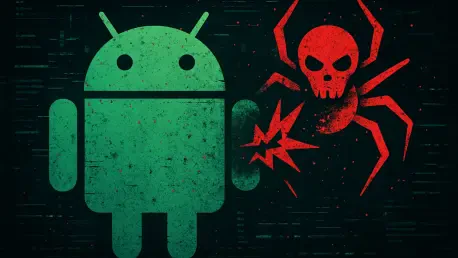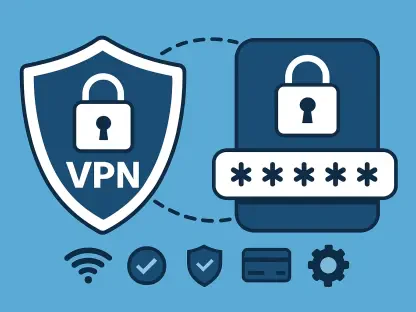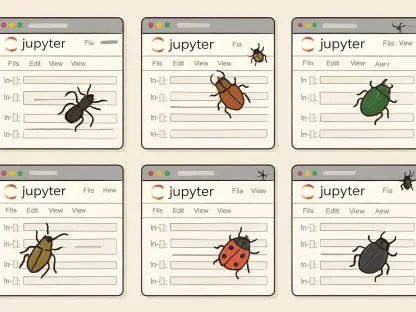I’m thrilled to sit down with Oscar Vail, a renowned technology expert with a deep focus on cutting-edge fields like quantum computing, robotics, and open-source initiatives. Today, however, we’re diving into a pressing cybersecurity concern—mobile malware, specifically the dangerous Klopatra Android trojan. With his extensive knowledge of emerging threats, Oscar is the perfect person to help us understand this sophisticated malware, how it targets users, and the evolving landscape of Android security. In our conversation, we’ll explore the mechanics behind Klopatra’s stealthy operations, its distribution methods, and the broader implications for mobile users across Europe and beyond.
Can you start by explaining what the Klopatra malware is and why it’s considered such a serious threat to Android users?
Klopatra is a newly discovered Android trojan that’s incredibly dangerous due to its ability to steal sensitive data like banking credentials and cryptocurrency from hot wallets. What makes it stand out is its persistence—it can operate even when the device’s screen is off, silently interacting with apps and extracting information. It’s a highly sophisticated piece of malware, likely built from scratch by a Turkish threat actor, and it’s already gone through 40 iterations since its discovery in March 2025. That rapid evolution shows it’s being actively refined to stay ahead of detection efforts.
What specific types of data does Klopatra target, and how does it manage to function with the screen off?
Klopatra primarily goes after financial data—think banking app logins and crypto wallet keys. It’s designed to siphon off anything that can be turned into quick cash for the attackers. As for operating with the screen off, it exploits Android’s background processes. Once it’s installed, it runs silently, mimicking user interactions without needing the display to be active. This lets it access apps, read content, and transmit data back to the attackers without the user ever noticing.
How was Klopatra initially uncovered, and what do we know about who might be behind it?
Cybersecurity researchers at Cleafy first spotted Klopatra in March 2025, and since then, they’ve been tracking its development closely. As for its origins, it’s believed to be the work of a Turkish threat actor. While specific details about the individual or group aren’t fully public, the malware’s unique design and rapid updates suggest a skilled developer or team with a deep understanding of Android systems and a clear intent to target financial data across Europe.
Can you walk us through how Klopatra spreads to unsuspecting users?
Klopatra spreads through deceptive means, primarily via standalone malicious webpages rather than the Google Play Store, which helps it avoid early detection. It’s hidden inside a dropper app called Modpro IP TV + VPN, which masquerades as a legitimate IPTV and VPN service. Users are lured into downloading it with promises of free or premium streaming and privacy features, only to unknowingly install the trojan on their devices.
Once it’s on a device, what exactly does Klopatra do to gain control?
After installation, Klopatra requests Accessibility Services permissions, which are meant for assisting users with disabilities but can be abused by malware. With these permissions, it can simulate taps, read everything on the screen, steal credentials, and even control other apps without the user’s knowledge. It’s essentially a backdoor to full device control, letting attackers interact with banking apps or wallets as if they were the user.
How does Klopatra manage to stay hidden from both users and cybersecurity researchers?
Klopatra is packed with evasion techniques. It uses Virbox, a legitimate software protection platform, to shield itself from reverse-engineering. It also employs anti-debugging mechanisms and emulator detection to thwart analysis in controlled environments. On top of that, it minimizes its use of Java and Kotlin by relying on native libraries and uses encryption methods like NP Manager to obscure its code. These layers make it incredibly tough to dissect or detect.
What other disruptive tactics does Klopatra use to compromise a device’s security?
One of its nastier tricks is targeting antivirus programs. Klopatra has a hardcoded list of popular Android antivirus apps, and it actively tries to disable them by cross-referencing what’s installed on the device. This leaves the phone defenseless, making it harder for users to detect or remove the malware. It’s a direct attack on the very tools meant to protect the device, amplifying the risk of further infections or data theft.
Can you give us a sense of how widespread this threat is right now?
So far, at least 3,000 devices across Europe have been infected, according to Cleafy’s findings. While that might not sound massive compared to some global threats, it’s a significant number for a targeted, evolving trojan like Klopatra. The focus seems to be on European users, though exact sub-regions aren’t fully specified yet. Given its active development, there’s a real concern this number could grow if not addressed quickly.
What is your forecast for the future of mobile malware like Klopatra in the coming years?
I think we’re going to see more threats like Klopatra—highly tailored, evasive, and focused on financial gain. As mobile devices become central to banking and crypto transactions, they’re prime targets for attackers. The use of legitimate tools like Virbox for malicious purposes is a worrying trend, and I expect cybercriminals to keep leveraging such tactics to stay under the radar. On the flip side, I hope this pushes Android security to evolve, with better app vetting and user education to combat these sophisticated threats before they spiral out of control.









